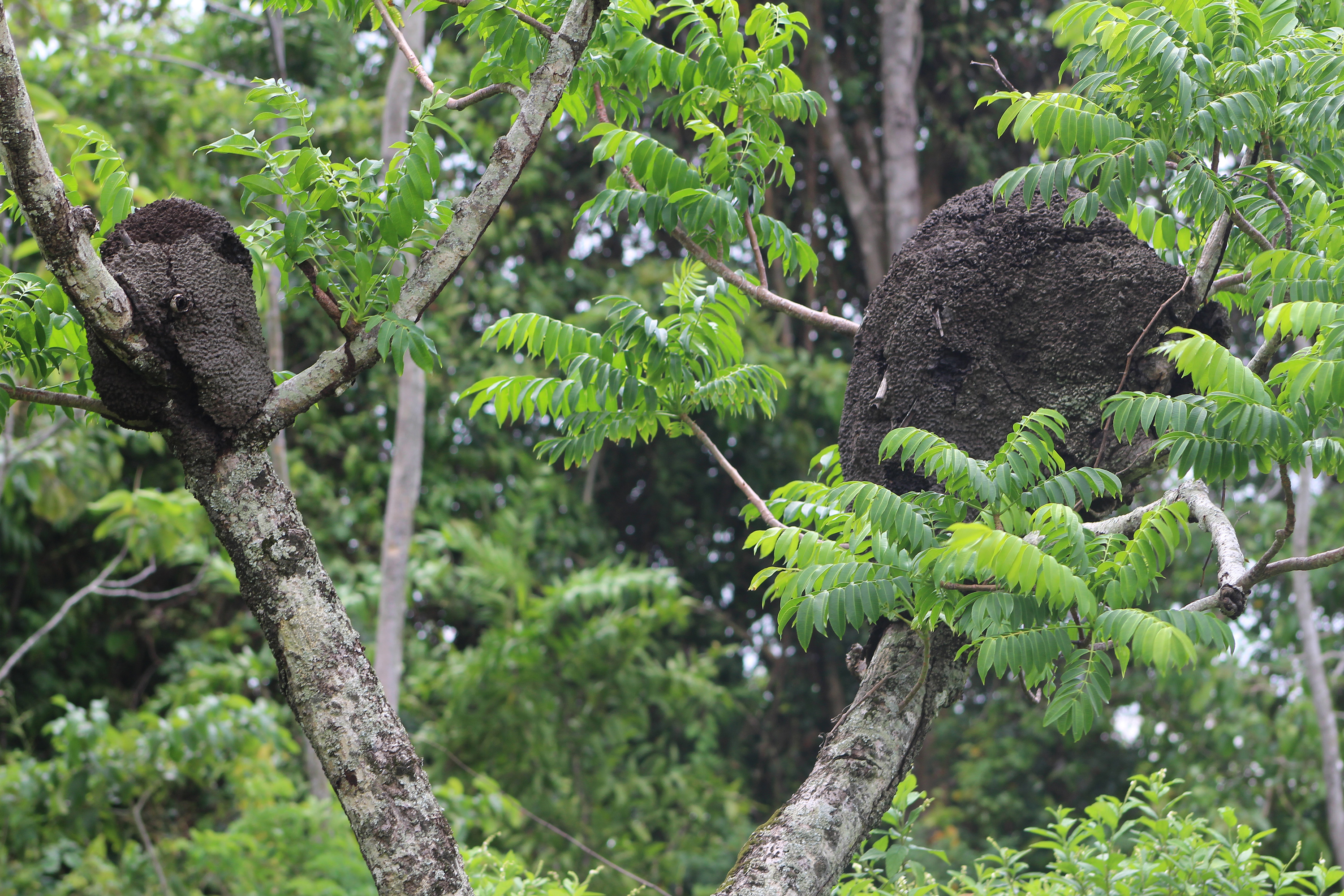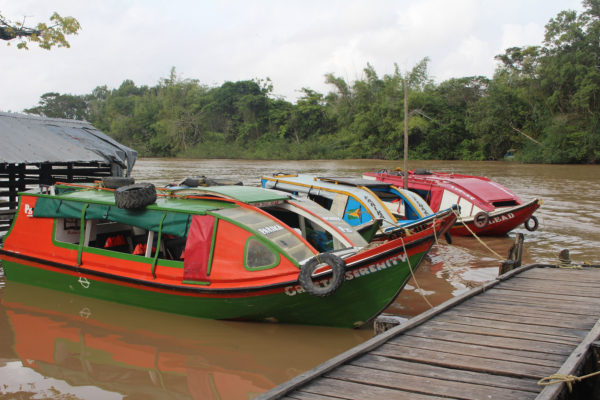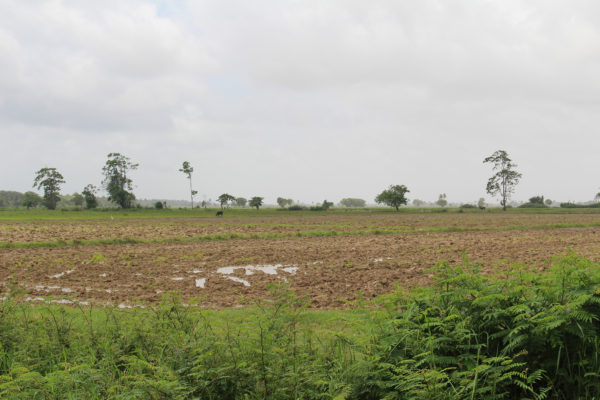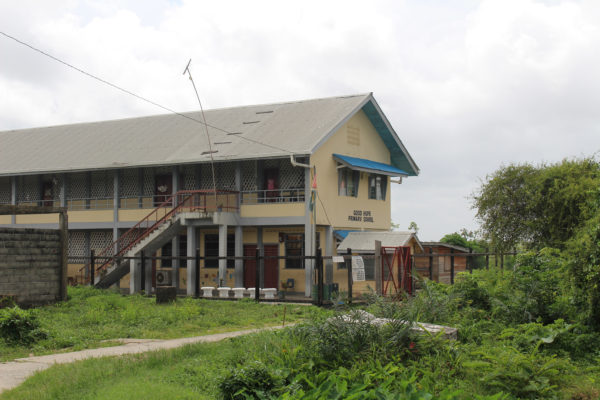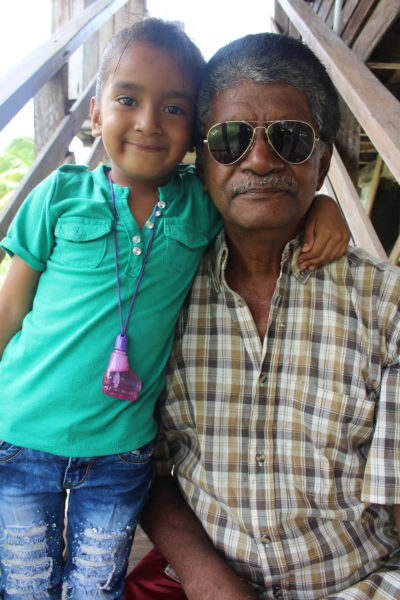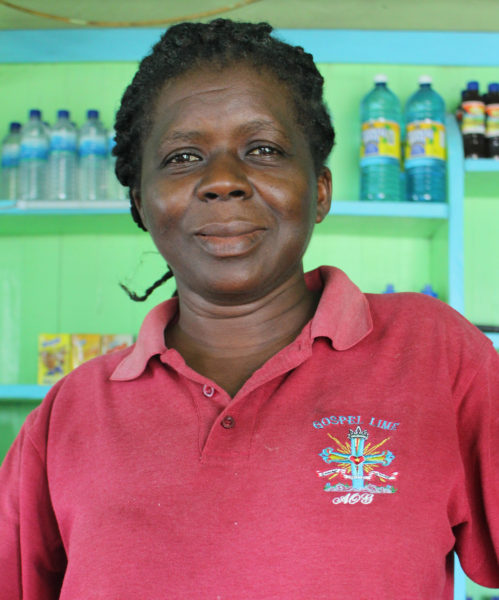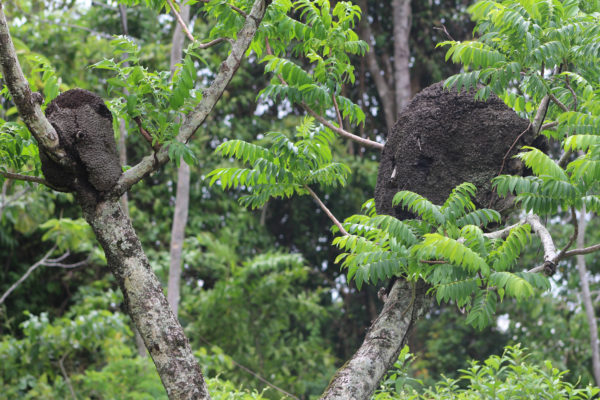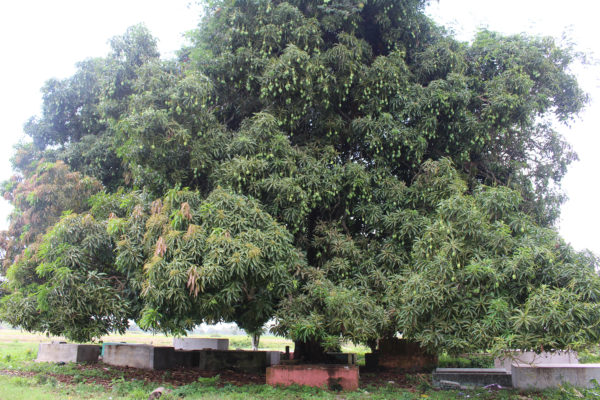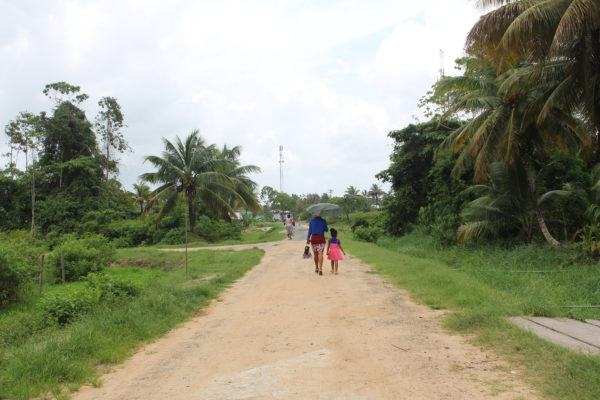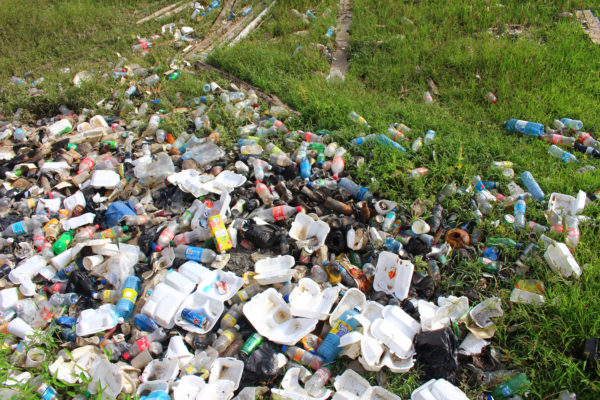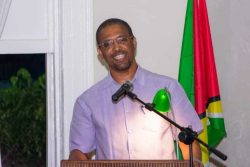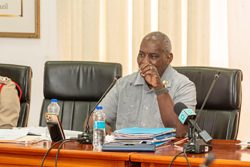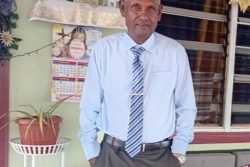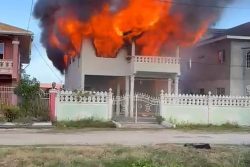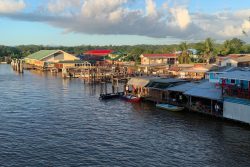A thrilling 45-minute ride from Parika, passed by thick forested islands, boats bobbing on the Essequibo River or sunken in a corner, brings you to Good Hope on the Essequibo Coast. For most of the journey, the speedboat climbed the waves before slapping down so hard on the water, that it felt the next slap could see the boat disintegrate.
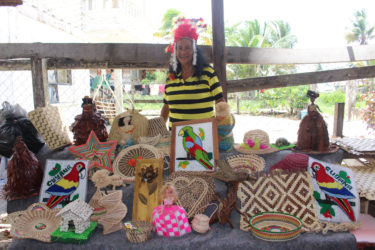
Calm came, as the boat turned into a creek, where it moored at a stelling that had a sign saying, “Welcome to Supenaam.” However, the village there is actually Good Hope, as residents were quick to inform that Supenaam is actually situated further along the creek and not on the coast. Good Hope, they said, was bought by 21 freed slaves.
Charmaine Sandiford is a shopkeeper who lives with her family close to the Supenaam Stelling. Her tidy little shop neatly displayed items on sale and was unique as there was not an iron grille in sight.
Sandiford related that she left Aurora further up the coast and settled in Good Hope when she got married. “When I came here there was a lot of bushes and the houses were far apart. More than 20 years I live here. It had so much bush that when people come to meet you, they used to call you from the road; nobody ain’t coming in here. I help to chop the track in front of me before it become a street,” she said.
She also recalled digging from the hydrant situated at the other corner to put in pipelines.
The woman said her place floods when there are heavy rains or spring tide. She feels that if they have a better drainage system conditions would improve.
She also wishes that the residents who have been living there for decades could be given their land titles.
Another concern of hers is suicide, which she said is rampant on the coast. “The youths here, after school, they play in the streets. It would be good if the children who finish school can have something to do. Some go and work in the bush; others kicking brick,” Sandiford said.
The woman said the friendly people of Good Hope have become part of her.
She would like to see better roads and an end to garbage being dumped at the side of the walkway leading to the ferry. Even though they burn it sometimes, she said when it floods, it all floats up.
It was Mother’s Day and a group of men had gathered at the bar next door to have a few drinks. Other persons were drinking and feasting at home while some were heading to the cemetery to paint the tombs of a beloved mother or sister.
Ivan Raghoo was at home waiting on his children who were preparing to go to a cemetery in another village to paint his wife’s tomb.
When he was just eight years old he and his parents took the lengthy trip from Berbice to live at Good Hope since his father worked close by.
“When I came to Essequibo, it was nothing like Essequibo is today. There was only tracks through the bushes to the schools. I attended the Good Hope Government School and learnt a trade as a saw filer. I prepared the sawmill blades,” said the pensioner.
“A disadvantage of living here is that you can’t farm because it floods during the spring tide,” he added.
Good Hope, he said, is filled with friendly people. “They’re all friendly people here; real friendly. The good thing about living here is that it’s peaceful. People mind their own business here. You don’t have cuss-outs, fights or row. Race doesn’t matter here. Everybody live as one.
“Another advantage is having the stelling here. Before, the stelling was situated in Adventure, 12 miles away. There was never a speedboat service. Today the stelling is situated in Good Hope and we have a speedboat service now.
“We are comfortable here. When there’s a wedding here, you don’t have to send invitations; everybody you know come. Support is first class. We get full support here.”
Raghoo boasts that he has eight children by three wives.
Through one of the streets lives Jenny Richmond. She has been residing in Good Hope for some 40 years, now but is originally from Supenaam.
“When I used to live in the creek, the creek used to swell and we used to have to go to school. We used to go to the Bethany Seventh Day Adventist School [now Bethany Primary],” Richmond said.
“We had to paddle; five of us [siblings] went to school at that time.
I was ten when I started out to school. Every child must know to paddle and swim before they start school because you had to go by boat. Because of the riverain area I wasn’t allowed until then. My mother used to say rain or sun, you got to go to school; only if you sick you staying home. She was serious about our education and even though I had to wait until I was ten, my mother never lapsed. I was a scholar by the time I started out to school. We used to have to wake up by two or three in the mornings and she used to set us out before daylight but we still used to reach to school late.
“At 14, I left the creek to stay with my sister in Georgetown and attend school. I stayed in Georgetown like 12 years and worked along with a dentist at the Seventh Day Adventist Conference. Then, when my sister got married and went to Linden, I went with her. After finding a husband I brought him back to live in Good Hope. The creeks develop now. Tributes from the Supenaam come by the names like Tiger Creek and Deer Creek.
“My mother used to say when you want to see tiger [jaguar], go to the Tiger Creek. When is dry weather in August, the creek used to dry up and the tiger used to come out to get the fish that left lying there. We used to go to get we share too. One time, we get 160-something himaras.
“Out here, most of the men and boys work the speed boats. We got rice farms and cattle. Some of them work with the logging company [Barama]; the biggest logging company in Guyana and the only company in Guyana that supplies ply. They’re located in Buck Hall.”
But according to her, there is no employment when it comes to getting “proper jobs”.
“We need adult education here where adults can rewrite CXCs and become computer literate,” Richmond advocated. “Persons who want to do so have to go all the way to Suddie. Transportation is another disadvantage. The fare to Suddie is $200 and once night reach—cause most of the classes finish in the evenings—the drivers then charge $1,000. I don’t know what does happen to them man,” she chuckled. “Like them gasoline does get more expensive once night step in.”
Richmond is a craftswoman, making items for sale such as bags, hats, dolls, placemats and turtles from coconut leaves, straw, coconut shells among others materials.
Further on, a street running alongside the health centre led to a huge mango tree, thick with green mangoes from top to bottom, everyone said it was the tree with the most mangoes in Good Hope. However, several tombs lie beneath the tree beneath the tree, containing the mortal remains of former villagers and beyond it, the rice fields.
A few lots away, the Good Hope Primary School sits between two cemeteries, one belonging to the village and the other to a church.
